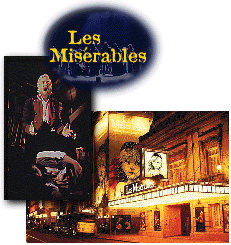




  
 |
- Begin with a general discussion about theatre and drama in class.
- Have your students define theatre and drama.
- Get them to list the plays they've seen or read. What did they like about them? Can they list any popular movies that were originally plays? (Driving Miss Daisy, Whose Life is it Anyway?, Barefoot in the Park, The Odd Couple, The Goodbye Girl, The Caine Mutiny, Death of a Salesman, A Streetcar Named Desire, Cat On A Hot Tin Roof etc.) What did they like about the plays? Can they remember the names of the actors? Can they remember the plot?

- Get students thinking about the development of the theatre and drama. (Note: Technically, the theatre is the actual playing space while the drama or play is performed in that space. Theatre, however, is also used in the broader context embracing the entire theatrical art form.) How did theatre develop? Why did people long ago put on plays? Why do people put on plays today?
- By the end of the brainstorming session, students should have enough information to begin an investigation or exploration of some aspect of the history of Canadian theatre. With older students (Grade 7+) you may want to briefly introduce early theatrical traditions such as Greek and Roman drama, or the Elizabethan and Restoration drama of England that influenced early theatrical productions in this country.
|



